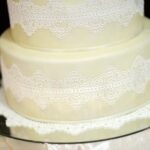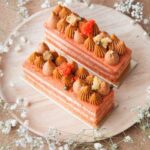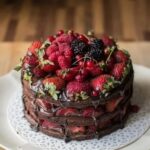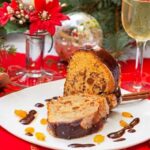Easter is a time of joy, renewal, and gathering with loved ones. Whether it’s hosting a festive brunch or attending a family gathering, Easter celebrations often revolve around food, and what better centerpiece for the table than a beautifully decorated cake? In this blog post, we will explore the significance of cakes in Easter traditions and delve into ideas and tips for creating your own stunning Easter cake.
Cakes have long held a special place in Easter celebrations. From their role in religious traditions to symbolizing new beginnings and abundance, cakes are an essential part of the Easter festivities. Decorating a cake for Easter not only adds visual appeal but also communicates the joyous spirit of the holiday. It serves as a symbol of celebration and becomes an edible work of art that brings delight to both young and old.
This blog post aims to provide inspiration and guidance for those looking to decorate their own cake for Easter. Whether you’re a seasoned baker or just starting out, we will cover everything from essential tools and ingredients to step-by-step instructions for achieving professional-looking results. Get ready to unleash your creativity and bring the magic of Easter alive through cake decoration.
Essential Tools and Ingredients for Cake Decorating
When it comes to decorating a cake for Easter, having the right tools and ingredients is essential. These tools will help you achieve professional-looking results while the ingredients provide both flavor and aesthetic appeal. Here are some of the essential tools and ingredients you’ll need for cake decorating:
- Piping bags: Piping bags are a must-have tool for creating intricate designs on your cake. They allow you to pipe buttercream or frosting in different shapes and patterns.
- Spatulas: Spatulas are used for spreading frosting or buttercream evenly onto your cake. A small offset spatula is great for smoothing out the sides, while a large one can be used to create decorative patterns.
- Cake stands: A cake stand not only adds height and elegance to your presentation, but it also makes it easier to decorate all sides of the cake without reaching over it.
- Fondant: Fondant is a versatile ingredient that allows you to create smooth coverings, decorations, and figurines for your Easter cake. It comes in various colors and can be easily molded into different shapes.
- Buttercream: Buttercream is a classic frosting choice that can be flavored and colored as desired. It’s ideal for creating borders, flowers, and other decorations.
- Food coloring: Food coloring allows you to add vibrant hues to your icing or fondant. Gel-based food coloring tends to yield more intense colors compared to liquid ones.
Before starting your decorating process, make sure your cake base is well-prepared and leveled as it will serve as the foundation for your decorations. Take the time to gather all of these essential tools and ingredients so that you’re fully equipped to create a beautifully decorated cake for Easter.
Remember, these are just the basics. As you gain more experience with cake decorating, you may find yourself investing in additional tools or experimenting with different ingredients to further enhance your creations. The key is to have fun and let your creativity shine through.
Design Inspiration
Easter is a time of celebration and joy, and what better way to add to the festivities than with a beautifully decorated cake? Decorating a cake for Easter allows you to showcase your creativity while adding a touch of holiday spirit to your dessert table. In this section, we will explore some design ideas that are perfect for Easter themed cake decorations.
One popular design idea for an Easter cake is incorporating colorful Easter eggs into the decoration. You can create an intricate pattern using different sizes and colors of fondant or use edible food coloring to paint on delicate egg designs. Another option is to make 3D Easter eggs using chocolate molds or modeling chocolate. These eggs can be placed on top of the cake or scattered around it for a whimsical effect.
Another iconic Easter symbol that works well for cake decorations is the bunny. You can create an adorable bunny face using fondant by shaping the ears, eyes, and nose and placing them on top of the cake. For a more elaborate bunny design, you can make a 3D bunny shape out of fondant or use a bunny-shaped cake mold. Adding edible grass around the base of the bunny will give it an extra touch of realism.
Flowers are also a classic choice for Easter-themed cakes as they symbolize new beginnings and springtime. Use flower-shaped cookie cutters or silicone molds to create delicate fondant flowers in various colors and sizes. These flowers can be placed around the sides of the cake or used to decorate a floral wreath on top. Incorporating fresh edible flowers like pansies or violets can also add an elegant touch to your Easter cake.
Finally, chicks are another fun option for an Easter-themed cake decoration. Molds made specifically for chick shapes are available at baking supply stores, making it easy to create cute little chicks out of fondant or modeling chocolate. Arrange these chicks on top of grass-shaped green frosting or alongside Easter eggs for an adorable cake design that is sure to impress.
The key to successful Easter-themed cake decorations is to let your creativity and imagination run wild. Whether you choose to incorporate symbols like eggs, bunnies, flowers, or chicks, the possibilities are endless. Have fun experimenting with different designs and colors to create a cake that truly embodies the joy and spirit of Easter.
Step-by-Step Guide
Gather Your Supplies and Prepare the Cake
Before diving into the decorating process, it’s important to gather all the necessary supplies for a smooth and successful experience. Make sure you have your piping bags, spatulas, and any other tools you plan on using within reach. Additionally, prepare your work surface by covering it with parchment paper or a non-stick mat to catch any spills or messes.
Start by leveling your cake layers if they aren’t already even. This can be done using a serrated knife or a cake leveler. Once your cake is level, brush away any loose crumbs to create a clean canvas for decorating.
Crumb Coat and Chill
To create a clean and polished look for your Easter cake, it’s essential to apply a crumb coat before moving on to the final layer of frosting. A crumb coat is a thin layer of frosting that seals in any loose crumbs and provides an even base for the final decoration.
Using an offset spatula, gently spread a thin layer of frosting over the entire cake, making sure to fill in any gaps between the layers. Don’t worry about achieving perfection at this stage; it’s just meant to secure the crumbs in place. Once you’ve finished applying the crumb coat, refrigerate the cake for about 10-15 minutes to allow it to set.
Add Final Decorations
Now that your crumb coat is chilled and set, it’s time to add the final decorations that will make your Easter cake truly special. Whether you’re going for an Easter egg pattern or intricate bunny design, take your time and let your creativity shine.
If you’re using fondant decorations, roll out the fondant on a clean surface dusted with powdered sugar or cornstarch. Use cookie cutters in various shapes and sizes to create Easter-themed pieces such as eggs or bunnies. Carefully transfer the fondant decorations onto the cake, gently pressing them down to ensure they stick.
For those using buttercream or other types of frosting for their designs, fill a piping bag with your desired frosting and attach a piping tip. Start piping along the edges of the cake and work your way towards the center, creating intricate patterns or simple designs based on your preference. Take breaks if needed to adjust the consistency of your frosting or change tips for different effects.
Remember, practice makes perfect, so don’t be discouraged if your first attempt doesn’t turn out exactly as planned. With time and experience, you’ll develop your own technique and style that will result in beautifully decorated Easter cakes year after year.
Choosing the Right Frosting and Filling for Your Easter Cake
When it comes to decorating a cake for Easter, choosing the right frosting and filling can make all the difference. The frosting not only adds flavor but also serves as a blank canvas for your decorations, while the filling enhances the overall taste and texture of the cake. In this section, we will explore different frosting options, as well as various fillings, to help you create the perfect Easter cake.
One popular choice for frosting is buttercream. It is versatile and easy to work with, allowing you to create smooth finishes or decorative piped designs. Buttercream can be flavored with extracts like vanilla or almond to add extra dimension to your cake.
Another option is cream cheese frosting, which pairs beautifully with carrot cakes and adds a tangy, creamy element. For a lighter option, whipped cream frosting is a great choice, especially if you want a refreshing taste that complements fruity flavors.
In terms of fillings, there are many delicious options to consider. Fruit preserves like strawberry or raspberry can add bursts of flavor throughout each bite of cake. Chocolate ganache is another popular choice that adds richness and indulgence while creating a beautiful contrast in color when layered with light-colored cakes. If you’re looking for something bright and citrusy, lemon curd can be an excellent choice that adds a zesty kick to your Easter cake.
| Frosting Options | Filling Ideas |
|---|---|
| Buttercream | Fruit Preserves |
| Cream Cheese | Chocolate Ganache |
| Whipped Cream | Lemon Curd |
Remember to choose your frosting and filling based on the flavor profile of your cake and the design you have in mind. The table above is just a starting point, and you can mix and match to create your own unique combinations. Whether you go for a classic buttercream with fruit preserves or a decadent cream cheese frosting with chocolate ganache, these choices will elevate your Easter cake and delight everyone at the table.
DIY Easter Cake Decorations
In this section, we will explore some fun and easy DIY ideas for Easter cake decorations. Decorating your own cake not only adds a personal touch, but it can also be a fun activity for the whole family to enjoy during the Easter season. Get ready to unleash your creativity and make your Easter cake truly unique.
One simple and popular DIY idea is creating sugar flowers to adorn your cake. These edible decorations add an elegant and delicate touch to any design. To make sugar flowers, you will need flower-shaped cutters, gum paste or fondant, a rolling pin, cornstarch for dusting, and food coloring if desired.
Roll out the gum paste or fondant thinly and use the cutters to create flower shapes. Mold each petal gently with your fingers to give them a natural curve. Allow the flowers to dry completely before attaching them to your cake using edible glue or royal icing.
Another festive DIY idea is making edible Easter eggs as decorations. You can easily create colorful chocolate eggs by melting different colored candy melts in separate bowls. Dip clean and dry plastic Easter eggs into the melted candy coating, tapping off any excess before placing them on wax paper to set.
Once they have hardened, carefully remove the plastic egg by gently squeezing it until it releases from the chocolate shell. Arrange these in a nest-like formation on top of or around your cake for a playful Easter touch.
Candy nests are another delightful DIY decoration that adds texture and sweetness to your Easter cake. To make candy nests, you will need mini pretzel sticks and melted chocolate or candy melts of your choice (such as chocolate, butterscotch, or white chocolate). Break the pretzel sticks into small pieces and arrange them in clusters on wax paper.
Drizzle or spread melted chocolate over the pretzels to form nests. Allow them to cool completely before gently peeling them off the wax paper and arranging them on your cake.
Let your imagination run wild as you create these DIY Easter cake decorations. You can mix and match these ideas or try something completely different to suit your personal style and taste. The key is to have fun and enjoy the process of making your Easter cake uniquely yours. With these DIY decorations, you are sure to impress your guests and create lasting memories during this special holiday season.
Displaying and Presenting Your Easter Cake
Once you have beautifully decorated your Easter cake, the next step is to showcase it in a way that highlights its beauty and adds to the overall aesthetic of your celebration. The presentation of your cake can make a significant impact on the overall ambiance of your Easter gathering. In this section, we will provide suggestions for displaying and presenting your Easter cake, ensuring that it becomes the centerpiece of your festive table.
One way to elevate the display of your Easter cake is by using a cake stand. A decorative cake stand not only serves as a practical platform for presenting your creation but also adds an elegant touch to the overall presentation. Consider using a stand that complements the theme or colors of your cake, such as pastel hues or floral patterns. This will help tie everything together and create a visually pleasing display.
In addition to using a cake stand, you can enhance the presentation further by incorporating fresh flowers as part of the display. Choose blooms that reflect the springtime feel of Easter, such as tulips, daisies, or lilies. Carefully arrange these flowers around the base or on top of the cake stand for an added burst of color and natural beauty.
Another consideration when displaying your Easter cake is how to arrange the entire dessert table. Opt for colors that complement each other and create a cohesive look throughout. For example, if you have decorated your cake with pastel-colored buttercream flowers, incorporate similar shades in other elements on the table – such as napkins or plates – to tie everything together.
It’s essential to pay attention to small details when presenting your Easter cake. Consider adding some Easter-themed props like miniature chicks, bunnies, or eggs around the base of the display. You can also sprinkle edible glitter over the frosting for an extra touch of sparkle or dust cocoa powder over fondant decorations for an earthy effect.
Remember that displaying and presenting your Easter cake should be a reflection of your creativity and personal style. Have fun with it and let your imagination run wild. Experiment with different ideas, props, and arrangements until you find the perfect display that will impress your guests and create a stunning centerpiece for your Easter celebration.
Troubleshooting and Common Cake Decorating Mistakes
Identifying Common Cake Decorating Mistakes
When it comes to cake decorating, even the most experienced bakers make mistakes. It’s important not to get discouraged when things don’t go as planned. By being aware of common cake decorating mistakes, you can be prepared and know how to overcome them. Some of the most common mistakes include cracked fondant, uneven icing, and colors that don’t turn out as expected.
Solutions and Troubleshooting Tips
Fortunately, there are solutions for these common cake decorating mishaps. For cracked fondant, start by kneading the fondant to soften it before rolling it out. If cracks still appear, try adding a bit of vegetable shortening or glycerin to the fondant while kneading to improve its elasticity. Additionally, avoid overstretching the fondant when covering the cake.
When dealing with uneven icing, it’s crucial to ensure that your cake is leveled before applying the frosting. Trim off any domed tops and use a long serrated knife or a cake leveler for a perfectly flat surface. To prevent lumpy icing, make sure your buttercream or royal icing is smooth and free of air bubbles before spreading it on the cake.
Colors that don’t turn out as expected can be frustrating but easily fixed. To achieve vibrant colors with food coloring, start with small amounts and gradually add more until you reach your desired shade. Keep in mind that some colors intensify over time or when exposed to light, so allow time for the color to develop before making any adjustments.
Remember that practice makes perfect in cake decorating. Don’t be too hard on yourself if things don’t go smoothly right away – every mistake is an opportunity to learn and improve your skills.
The Importance of Practice and Patience
Cake decorating is an art form that requires practice and patience. Rome wasn’t built in a day, and a beautifully decorated cake won’t happen overnight. The more you practice, the better you’ll become at handling common mistakes and achieving flawless results.
Having patience is key to successfully troubleshooting cake decorating problems. Don’t rush through the process and take your time to address any issues that arise. Whether it’s waiting for fondant to soften or allowing icing to set before adding additional layers, patience will ultimately lead to a beautifully decorated cake.
Conclusion
In conclusion, decorating a cake for Easter is not only a creative and enjoyable activity, but it also holds significance in the celebration of this special holiday. Throughout this blog post, we have explored essential tools and ingredients, design inspiration, a step-by-step guide, frosting and filling options, DIY decoration ideas, tips for displaying the cake, troubleshooting common mistakes, and more.
Now that we have covered all the necessary steps and considerations, it is time to add those finishing touches and leave you with some final thoughts.
As you embark on your Easter cake decorating journey, remember to let your creativity shine. Don’t be afraid to try new techniques or experiment with different designs. This is your chance to showcase your talents and create something truly unique. Whether you choose to go with traditional Easter symbols like bunnies or eggs or opt for more intricate floral designs or abstract patterns – the choice is yours. So have fun with it.
Lastly, always remember that the joy of creating and sharing a beautifully decorated Easter cake goes beyond its visual appeal. It is about coming together with loved ones and celebrating this meaningful holiday. As you present your masterpiece to friends and family, take a moment to appreciate the time and effort you put into making it special.
So go ahead, gather your tools and ingredients, let your imagination run wild, and enjoy the process of bringing your Easter cake vision to life. May this article inspire you to create an unforgettable centerpiece for your Easter celebration – one that leaves everyone in awe of both its beauty and taste. Happy decorating.
Frequently Asked Questions
How to decorate a cake for Easter?
Decorating a cake for Easter can be a fun and creative process. One popular way to decorate an Easter cake is by using pastel-colored frosting or icing. You can choose light shades of pink, blue, green, or yellow to give a festive touch to the cake. Additionally, you can use Easter-themed edible decorations such as bunnies, chicks, or flowers made of sugar or fondant.
These can be placed strategically on top of the cake or around the edges for an attractive design. Another option is to create a springtime scene on the cake by using edible grass or shredded coconut dyed with food coloring as grassy patches, and adding small candy eggs as if they were hidden throughout the scene. The key is to let your imagination run wild and have fun with the decorations!
How to decorate a cake with Easter eggs?
Decorating a cake with Easter eggs adds an extra element of charm and festivity. To do this, start with a nicely frosted cake base in your preferred flavor and color. Place chocolate or candy Easter eggs on top of the cake either individually or in a pattern that covers the entire surface.
You can arrange them in a circle around the outer edge or create concentric circles going towards the center for an appealing visual effect. Another idea is to partially bury some egg-shaped candies into the frosting so it appears like they are emerging from within the cake itself. This gives a whimsical touch to your creation while incorporating traditional elements associated with Easter.
What traditional cake is eaten at Easter?
The traditional cake eaten at Easter varies depending on cultural and regional traditions. In many countries such as England, Ireland, and Australia, one popular choice is Simnel Cake—a fruitcake that has been layered with marzipan and covered with more marzipan on top, often toasted slightly for added flavor and texture. Another common traditional Easter cake is Colomba di Pasqua which originated in Italy—this dove-shaped sweet bread is similar to panettone but contains candied citrus peel and almonds.
In Eastern Europe, including Russia and Ukraine, it is traditional to bake a rich, sweet yeast bread called Kulich which is often topped with icing or a glaze, and sometimes sprinkled with decorations like candied fruit or nuts. Ultimately, the choice of traditional Easter cake largely depends on cultural customs and personal preference.

Welcome to my blog about home and family. This blog is a place where I will share my thoughts, ideas, and experiences related to these important topics. I am a stay-at-home mom with two young children. I hope you enjoy reading it! and may find some helpful tips and ideas that will make your home and family life even better!





